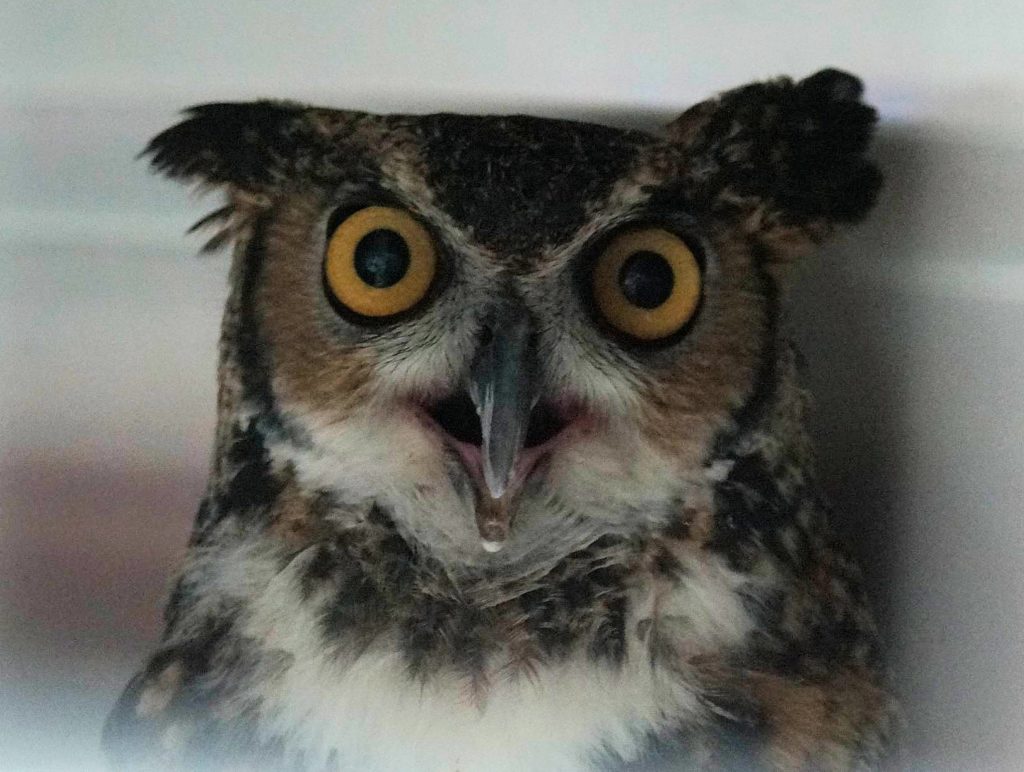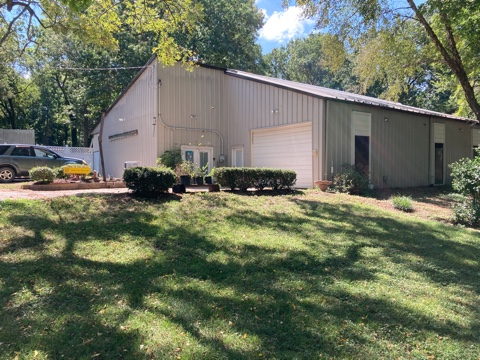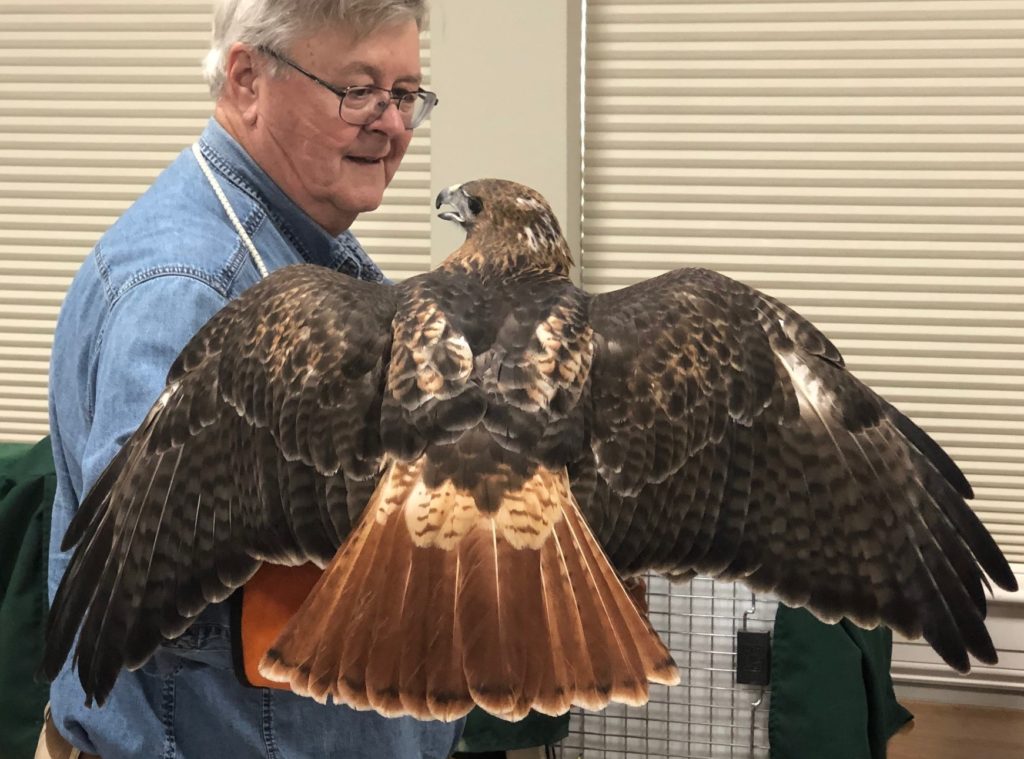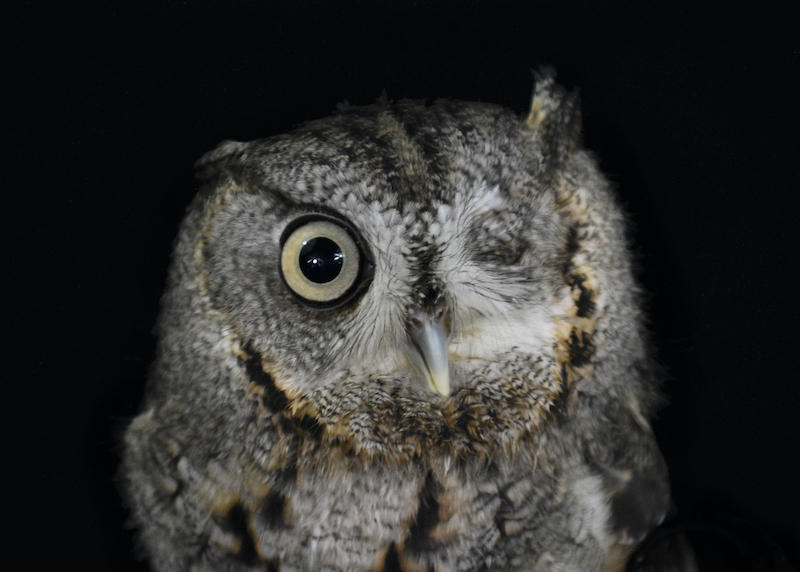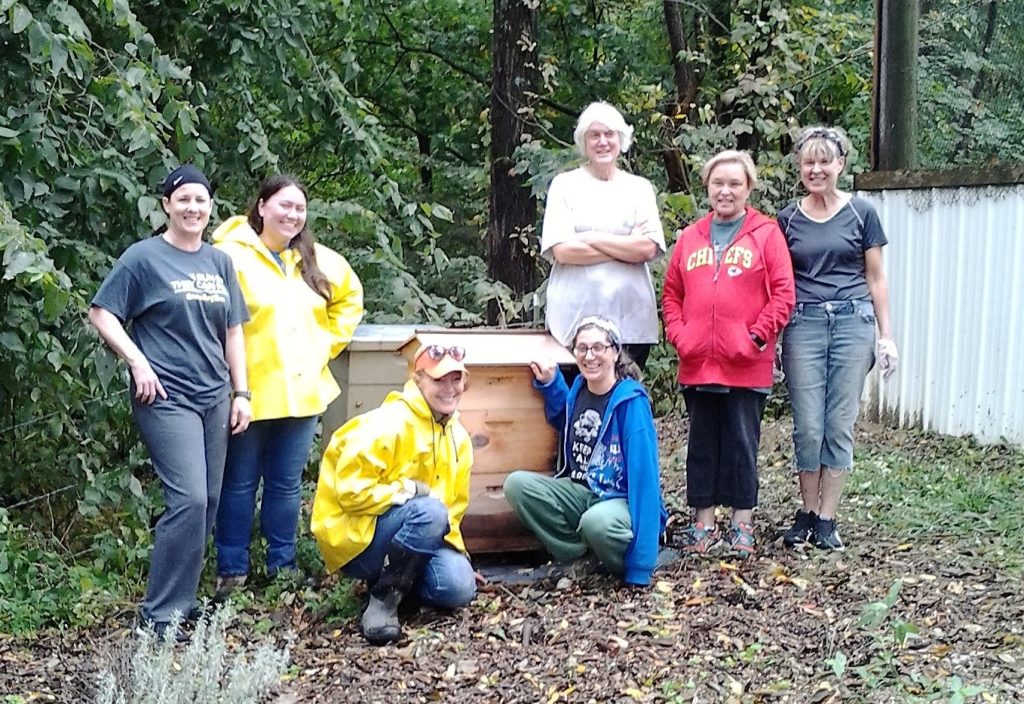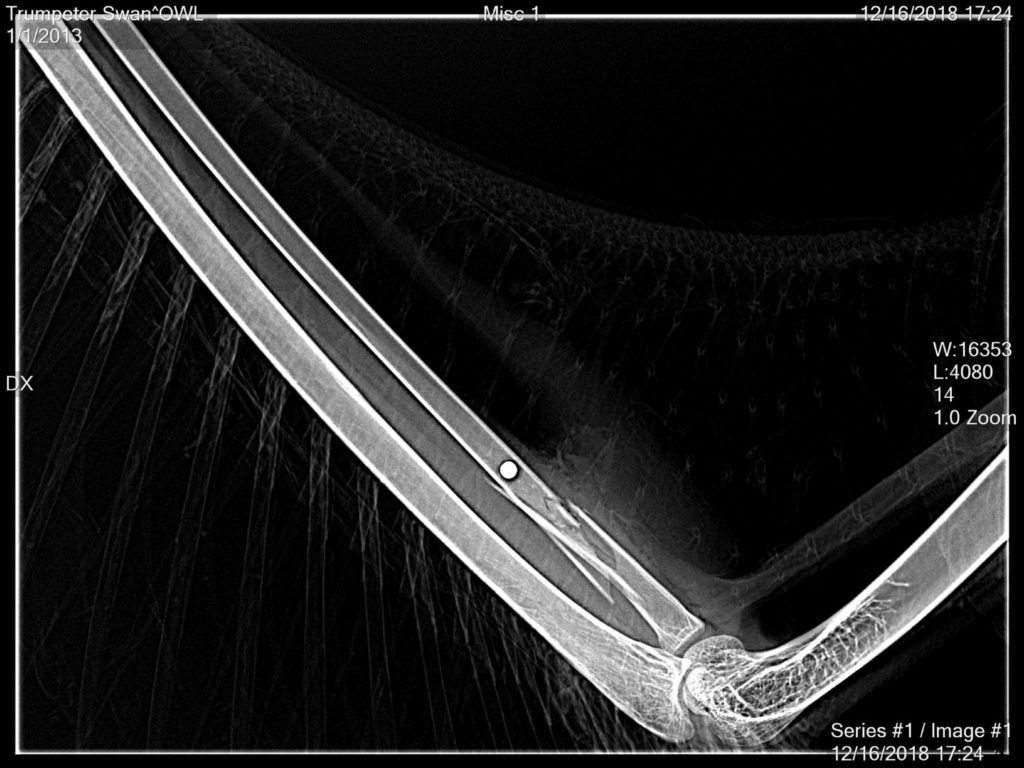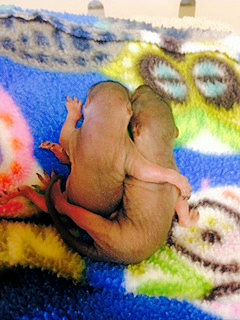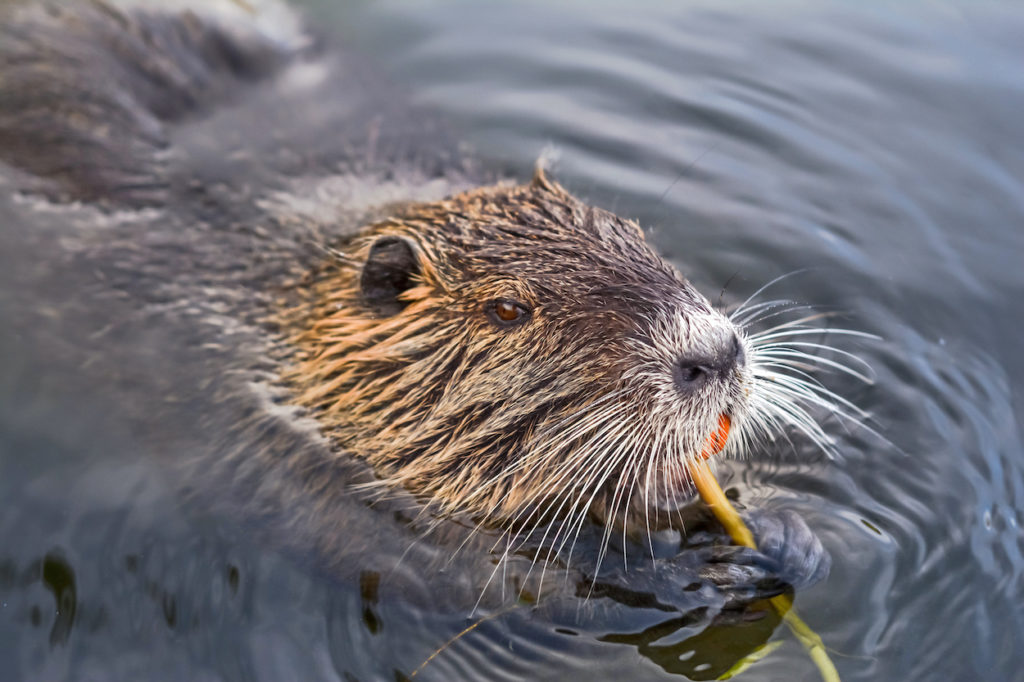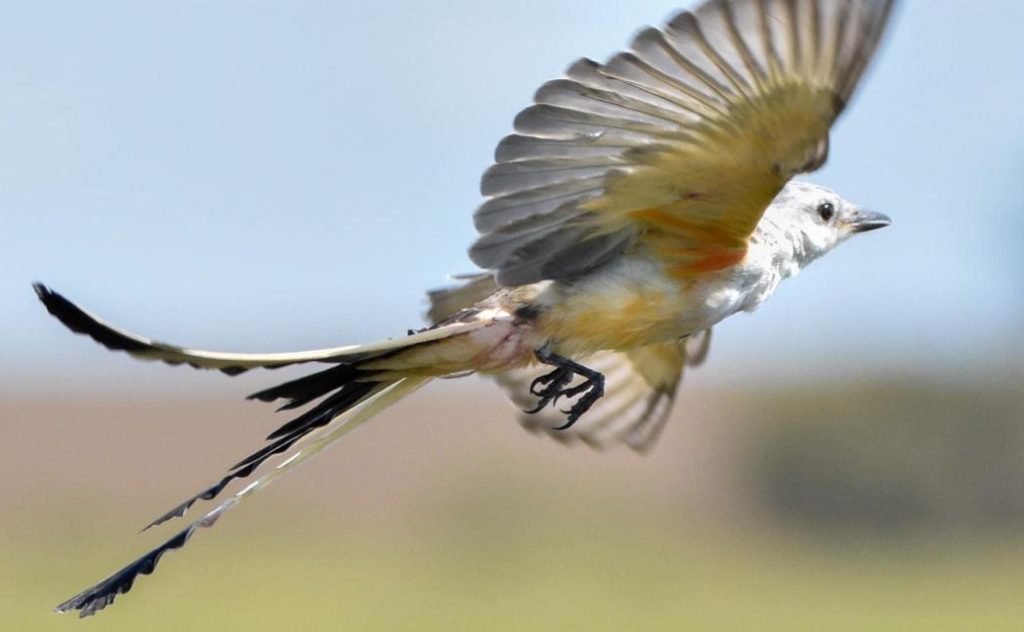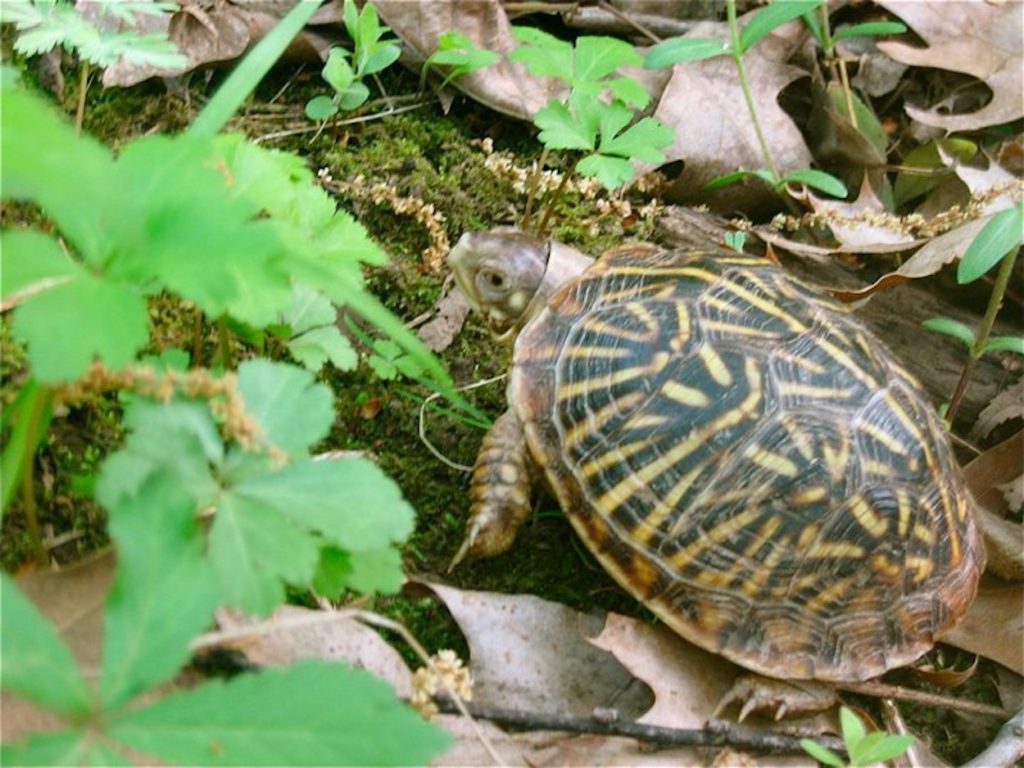About
Ducks and Geese
Canada Geese
Canada Geese mate for life. Their nest is made of sticks, mosses and grasses, and is lined with down. They lay four to six white eggs. The incubation period is 28 – 32 days and between March – June. Courtship displays last through spring. Natural food consists of submerged vegetation, grasses, winter wheat, clovers, and waste grain. Often, they make their nests in mulch in urban areas, such as around trees, and they prefer mulch beds with junipers. The geese lead their goslings to water within 24 hours after hatching. In the urban areas, they prefer mulch beds.
The gander (male) has the role of protection and providing relief. They may wander away from the nesting area sitting around staring at people. Some males defend their nest vigorously while the female (goose) incubates eggs. To avoid attracting predators to the nest, the gander stays away, but is close enough that he can hear the emergency call of the female. If the nest is being harassed, the gander will hiss, spread his wings, and chase. Females have the role of laying and incubation. Her primary job is to hatch eggs. The gander will give her breaks to feed and bathe, but 80 percent of egg care is done by the female. It is illegal to harass a nest, relocate, remove, or destroy the eggs.
Geese and ducks have adapted to our city life quite well. To find a safe nesting place, they will seek places people generally don’t go. This means you will find them on awnings, roofs, freeway medians, and parking lots.
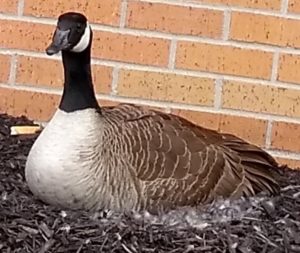
Mallard Ducks
Mallard ducks mate for life. Their nest is made from reeds and grasses and is lined with down. They lay eight to 10 pale greenish-white eggs and incubate for 26 – 30 days. The hen (female) does the primary incubation with the drake (male) protecting the area and providing relief. Courtship displays last through fall and winter. Natural food consists of aquatic vegetation, grains, and insects. They often nest in mulch in urban areas. The ducks lead their ducklings to water within 24 hours after hatching. Parenting roles are very similar to Canada geese.
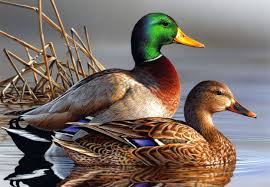
Wood Ducks
Breeding pairs search for nest cavities during early morning. They typically choose a tree more than 1-2 feet in diameter, with a cavity anywhere from 2–60 feet high (higher sites seem to be preferred). These cavities are typically places where a branch has broken off and the tree’s heartwood has subsequently rotted. They lay 6-16 glossy creamy white to tan eggs and incubate for 28-37 days. Courting males swim before a female with wings and tail elevated, sometimes tilting the head backwards for a few seconds. Egg-dumping, or “intraspecific brood parasitism” is common in Wood Ducks—females visit other Wood Duck cavities, lay eggs in them, and leave them to be raised by the other female. The nest tree is normally situated near to or over water, though Wood Ducks will use cavities up to 1.2 miles from water. Nest cavities can have openings as small as 4 inches across, and these may be preferred because they are harder for predators to enter. Cavity depths are variable; they average about 2 feet deep but in rotten trees can be 15 feet deep (the young use their clawed feet to climb out).
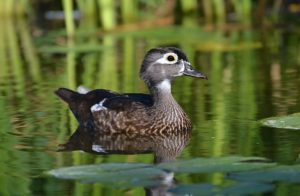
To rescue or not to rescue
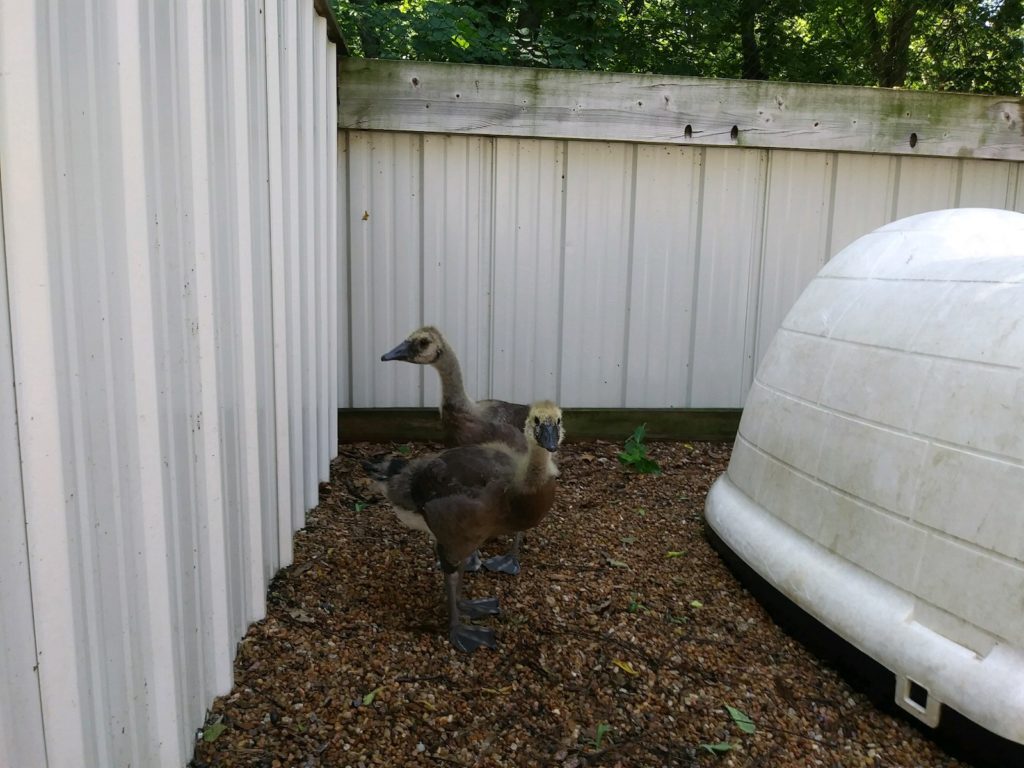
Found a Duckling or Gosling Alone
Look for others in the area and try to get the loner to them. If that doesn’t work call OWL immediately
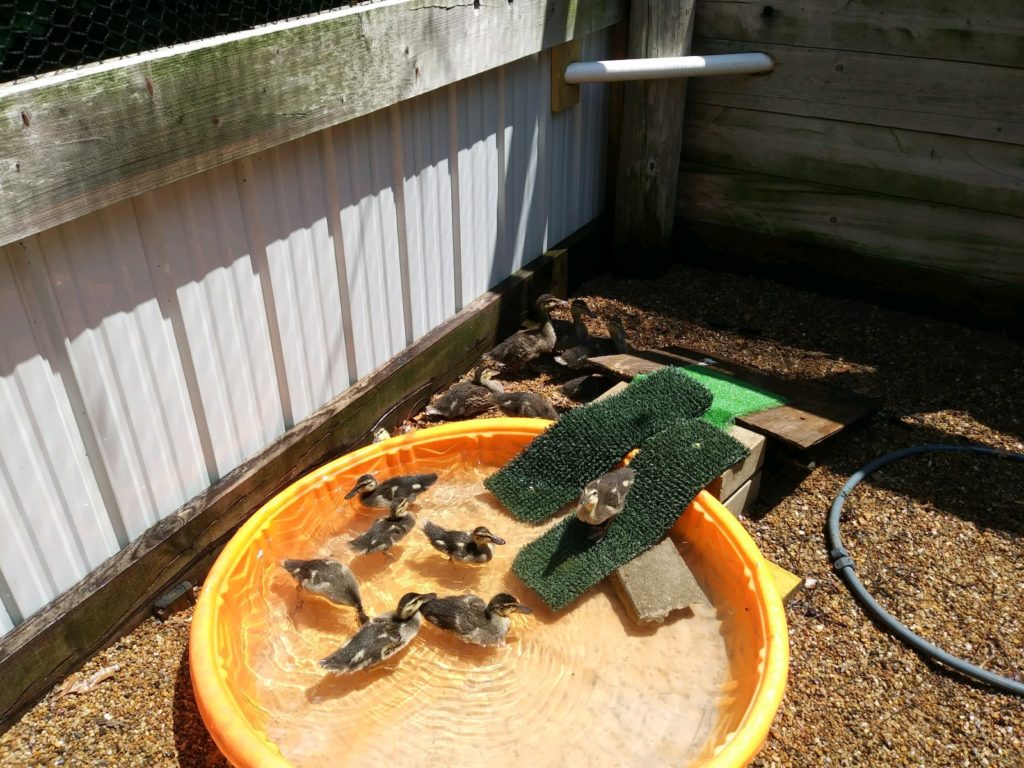
Found an Egg or an Unattended Nest
If no eggs are present, you can remove the nest at any time. Repeatedly removing nesting materials usually will force breeding waterfowl to relocate, build a new nest, or nest later in the season. Nest construction may last for several weeks, and the first egg may be laid less than 24 hours after the nest is completed. Once the first egg is laid in a nest, no further action can be taken without an egg/nest destruction permit issued by the Division of Fish and Wildlife.
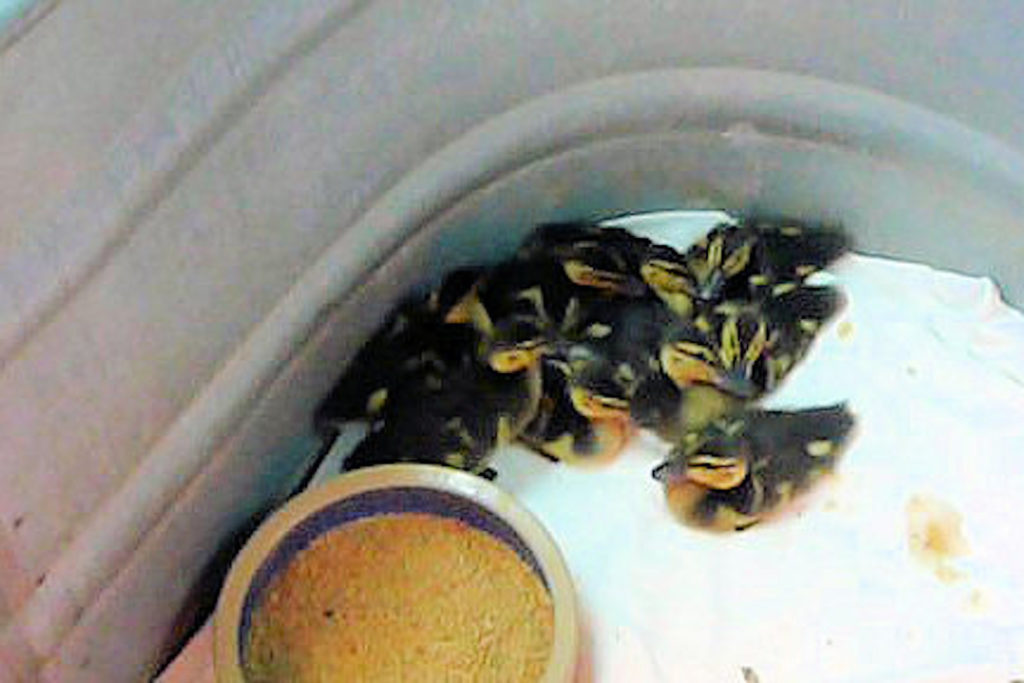
We Found a VISIBLY Injured Adult Duck or Goose
If the bird can walk, fly, or swim, you don’t stand a chance of catching it. If you can catch it, it needs attention. Please follow these steps:
- Place the duck into a protective container (preferably a pet carrier).
- Line it with a dry towel free of any loose strings that might be ingested or cause tangles.
- Avoid using newspapers for bedding; they can remove the oil from a duck’s feathers.
- Do not feed it. It may have internal injuries or be impacted. Feeding complicates the treatment.
- Try not to disturb the goose/duck. Let it rest quietly in a safe and closed-off room until you can arrange for it to be delivered to a rehabber. Keep pets and children away to minimize stress.
Signs of Injury
If you notice any of these issues, call OWL as soon as possible:
- Cold and lethargic.
- Covered with ants, or flies/flystrike (looks like small clusters of rice anywhere on the animal).
- Dehydrated.
- Has been fed any kind of formula or food.
- Has been in a cat’s or dog’s mouth.
- Broken limb, cuts, or bruises.
- Head tilt.
- Bleeding.
- Unable to stand or move without falling over.
Common Concerns
Canada geese and Mallard ducks normally migrate south in the fall and winter. However, this activity is decreased if there is an abundant food supply and open water. Populations of geese and ducks should not be fed bread or other foodstuffs by humans. Clutch size is directly proportional to the amount of food available. For example, feeding by people increases the number of eggs laid and hatched. A habitat will only support a certain number of individuals. When the food becomes scarce, the inhabitants will migrate out of the area to a new one. Feeding by people discourages this natural movement and increases property damage from overgrazing, overpopulation, and ultimate starvation for the animals involved. To discourage the nesting of Canada geese and Mallard ducks, remove mulch and replace with decorative rock. Do not mow down to the water’s edge. Leave a barrier of vegetation.
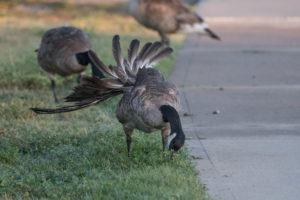
Do not feed wild geese and ducks. Bread, popcorn, French fries, and other junk food are not nutritionally balanced and can cause impactions, malnutrition, and death by starvation. Nutritional deficiencies produce a condition called “angel wing” as shown in the picture. This is a deformity of the wing and it is permanent.
Often geese and ducks will become frozen to the ice during the night. Normally this is a temporary thing. Many people think that they will freeze to death; however, they have several inches of down under their feathers. (If you’ve ever worn a down jacket or slept under a down comforter, you’re aware of the insulating and thermal properties that down possesses.) The heat of their bodies normally will thaw the ice enough to release the feathers from the ice so that they can move freely.
OWL DOES NOT HAVE THE RESOURCES OR VOLUNTEERS WHO ARE TRAINED IN REMOVAL OF GEESE AND DUCKS FROM ICE.
How to Transport
Mark eggs
To transport eggs – mark the egg with an X and gently nestle it into a paper towel or tissue nest. Do this for each egg so they don’t knock into each other and crack.
Warm, dark, and quiet
To transport young – place in a large box with a towel on the bottom. The towel should be free of loose strings or holes. Keep them warm, dark and quiet.
Adults
To transport adults, place them into a protective container (preferably a pet carrier if you have one on hand). Line it with a dry towel free of any loose strings that might be ingested or cause tangles. Avoid using newspapers for bedding; they can remove the oil from feathers.
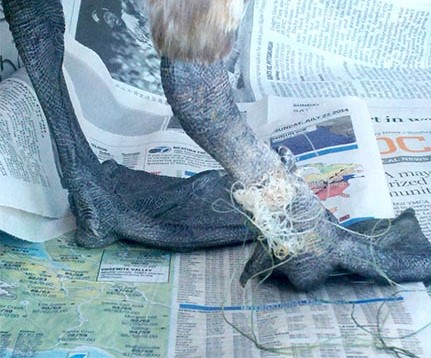
Fishing line
OWL receives geese, ducks and other water birds that are often entangled in fishing line. This can cause injuries to wings and legs. If you find an animal like this please contain it as soon as possible. Fishing line is made of plastic and won’t disintegrate over time so it continually tightens around the birds appendages until they are strangulated, amputated or rot off. We can repair alot of the damage if the animal is brought into us and the line is removed early. The best way to help is to be proactive and dispose of any fishing line you come across. Many boat ramps, piers and beaches have receptacles for monofilament recycling. Below are instructions for building your own https://www.boatus.org/monofilament/build-a-bin/
If you live on a pond or lake with an HOA consider having them install several of these if fishing is allowed or talk to your local parks to see if they would install some.If you find a bird that has fishing line on it try to catch it and bring it in to us. Some birds need to be anesthetized in order to get all the line off the leg because it can become embedded. Don’t cut the line off unless you are versed in anatomy.
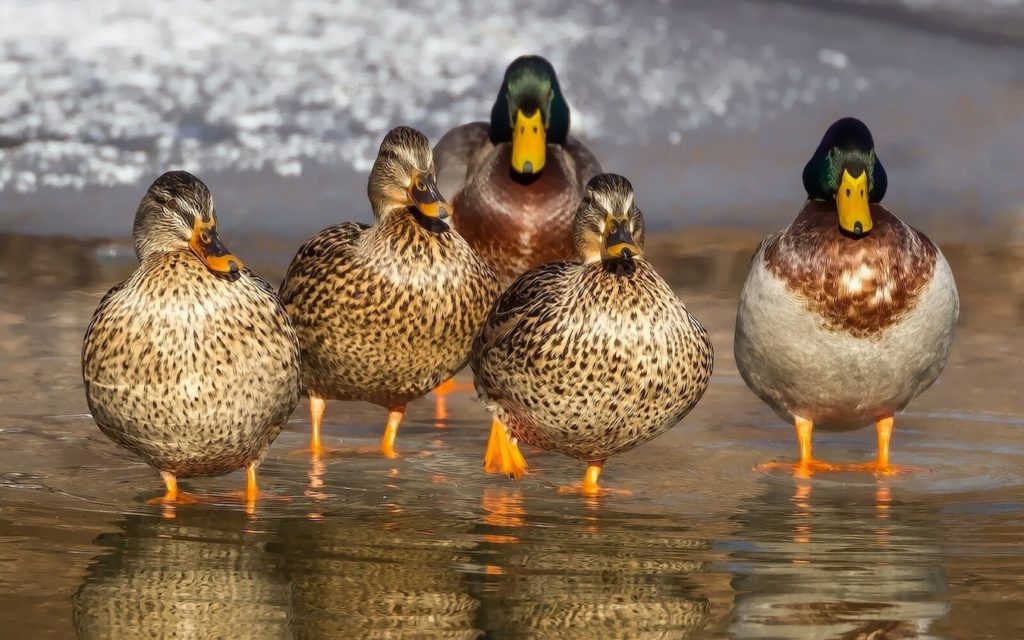
Contact Operation WildLife for help.

